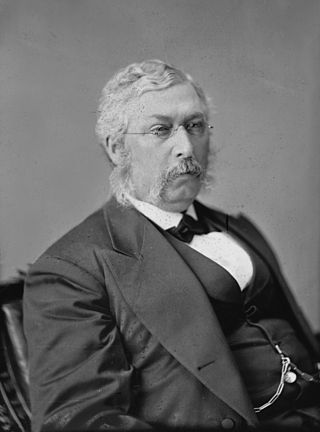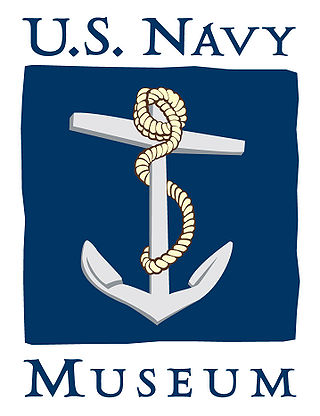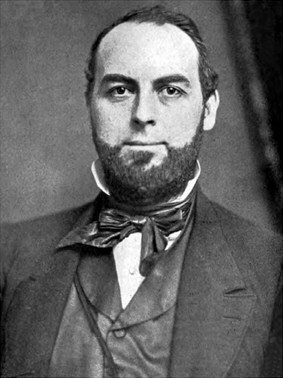History
Intelligent Whale was built on the design of Scovel Sturgis Merriam in 1863 by Augustus Price and Cornelius Scranton Bushnell. In 1864 the American Submarine Company was formed, taking over the interests of Bushnell and Price and there followed years of litigation over the ownership of the craft. Intelligent Whale was completed and launched in 1866. When title was established by a court the submarine was sold on 29 October 1869 through a contract made by owner Oliver Halstead and Secretary of the Navy George M. Robeson to the United States Navy Department, with most of the price to be paid after successful trials. In September 1872 the first trial was held and was unsuccessful, whereupon the Department refused further payments and abandoned the project.
Intelligent Whale submerged by filling water compartments, and expelled the water by pumps and compressed air. It was estimated that it could stay submerged for about ten hours. Thirteen crewmen could be accommodated, but only six were needed to make her operational. The only known trial, reported by submarine pioneer John Philip Holland, was made by a certain General Sweeney and two others. They submerged the boat in 16 feet (5 m) of water and Sweeney, clad in a diver's suit, emerged through a hole in the bottom, placed a charge under a scow, and reentered the submarine. The charge was exploded by a lanyard and a friction primer attached to the charge, sinking the scow.
Following the failed trial in 1872, Intelligent Whale was put on display at the Brooklyn Navy Yard and remained there until 1968 when she was moved to the Washington Navy Yard where she remained until being relocated to the National Guard Militia Museum of New Jersey in Sea Girt, New Jersey, where she is currently on display.
The U.S. Navy did not accept a submarine for service until the USS Holland was commissioned in 1900.

USS Holland (SS-1) was the United States Navy's first modern commissioned submarine, although not the first military submarine of the United States, which was the 1775 submersible Turtle. The boat was originally laid down as Holland VI at the Crescent Shipyard of Elizabeth, New Jersey for John Philip Holland's Holland Torpedo Boat Company, and launched on 17 May 1897. She was acquired by the USN on 11 April 1900 and commissioned on 12 October 1900, Lieutenant H. H. Caldwell commanding.

USS Argonaut (V-4/SF-7/SM-1/A-1/APS-1/SS-166) was a submarine of the United States Navy, the first boat to carry the name. Argonaut was laid down as V-4 on 1 May 1925 at Portsmouth Navy Yard. She was launched on 10 November 1927, sponsored by Mrs. Philip Mason Sears, the daughter of Rear Admiral William D. MacDougall, and commissioned on 2 April 1928. Although never officially designated as "SS-166", at some point she displayed this number on her conning tower.

USS Whale (SS-239), a Gato-class submarine, was the second ship of the United States Navy to be named for a whale, an extremely large, aquatic mammal that is fishlike in form. The USS Cachalot (SS-170) commissioned on 1 December 1933 preceded the Whale.

Turtle was the world's first submersible vessel with a documented record of use in combat. It was built in 1775 by American David Bushnell as a means of attaching explosive charges to ships in a harbor, for use against the Royal Navy during the American Revolutionary War. Connecticut Governor Jonathan Trumbull recommended the invention to George Washington, who provided funds and support for the development and testing of the machine.

USS S-5 (SS-110) was a "Government-type" S-class submarine of the United States Navy. Her keel was laid down on 4 December 1917 by the Portsmouth Navy Yard of Kittery, Maine. She was launched on 10 November 1919, sponsored by Mrs. Glenn S. Burrell, and commissioned on 6 March 1920 with Lieutenant Commander Charles M. "Savvy" Cooke, Jr., in command. She sank accidentally during full-power trials on 1 September 1920, but due to actions by her crew and the crews of other ships, there were no deaths. Refloated, she was lost when she sank again while under tow on 3 September 1920.

David Bushnell , of Westbrook, Connecticut, was an American inventor, a patriot, one of the first American combat engineers, a teacher, and a medical doctor.

USS Plunger (SS-2) was one of the earliest submarines of the United States Navy. She was the lead boat of her class and was later renamed A-1 when she was designated an A-type submarine. She is not to be confused with the experimental submarine Plunger which was evaluated by the U.S. Navy from 1898 to 1900, but not accepted or commissioned.

USS O-13 (SS-74) was an O-class submarine of the United States Navy. Her keel was laid down on 6 March 1916 by the Lake Torpedo Boat Company in Bridgeport, Connecticut.

USS G-4 (SS-26) was a G-class submarine of the United States Navy. While the four G-boats were nominally all of a class, they differed enough in significant details that they are sometimes considered to be four unique boats, each in a class by herself.

USS Alligator, the fourth United States Navy ship of that name, is the first known U.S. Navy submarine, and was active during the American Civil War. During the Civil War the Confederate States Navy would also build its own submarine, H. L. Hunley.

George Maxwell Robeson was an American politician and lawyer from New Jersey. A brigadier general in the New Jersey Militia during the American Civil War, he served as Secretary of the Navy, appointed by President Ulysses S. Grant, from 1869 to 1877. A member of the Republican Party, he also served two terms as a U.S. Representative for New Jersey from 1879 to 1883.

USS Turner (DD-648), was a Gleaves-class destroyer of the United States Navy. She was commissioned on 15 April 1943 and sank after suffering internal explosions on 3 January 1944.

The National Museum of the United States Navy, or U.S. Navy Museum for short, is the flagship museum of the United States Navy and is located in the former Breech Mechanism Shop of the old Naval Gun Factory on the grounds of the Washington Navy Yard in Washington, D.C., United States.
The history of the submarine spans the entire history of human endeavour as mankind has since early civilisation sought to explore and travel under the sea. Humanity has employed a variety of methods to travel underwater for exploration, recreation, research and significantly, warfare. While early attempts, such as those by Alexander the Great, were rudimentary, the advent of new propulsion systems, fuels, and sonar, propelled an increase in submarine technology. The introduction of the diesel engine, then the nuclear submarine, saw great expansion in submarine use - and specifically military use - during World War I, World War II, and the Cold War. The Second World War use of the U-Boat by the German Navy against the Royal Navy and commercial shipping, and the Cold War's use of submarines by the United States and Russia, helped solidify the submarine's place in popular culture. The latter conflicts also saw an increasing role for the military submarine as a tool of subterfuge, hidden warfare, and nuclear deterrent. The military use of submarines continues to this day, predominantly by North Korea, China, the United States and Russia.

Cornelius Scranton Bushnell was an American railroad executive and shipbuilder who was instrumental in developing ironclad ships for the Union Navy during the American Civil War.

German submarine U-85 was a Type VIIB U-boat of Nazi Germany's Kriegsmarine during World War II.

The National Guard Militia Museum of New Jersey is headquartered in Sea Girt, with a second museum located in Lawrenceville, New Jersey, and operates under the auspices of the New Jersey Department of Military and Veterans Affairs.

USS Mary Alice (SP-397) was a United States Navy patrol vessel commissioned in 1917 and sunk in 1918.

Holland Torpedo Boat Station is where the first United States Navy submarines were stationed for trials and training of submarine crews from 1899 to 1905. Holland Torpedo Boat Station was located in the community of Hamlet in New Suffolk, New York. Hamlet claims to be the first submarine base in the United States. The USS Holland was based at Hamlet's Holland Torpedo Boat Station from 1899 to 1905. Seven submarines built by the Holland Torpedo Boat Company – Electric Boat Company were stationed at Hamlet. Holland Torpedo Boat Station at Cutchogue Harbor was not designated a submarine base by the US Navy. The US Navy gave that title to Naval Submarine Base New London as the first submarine base. Naval Submarine Base New London was commissioned by the US Navy in 1916 as a dedicated submarine base.



















